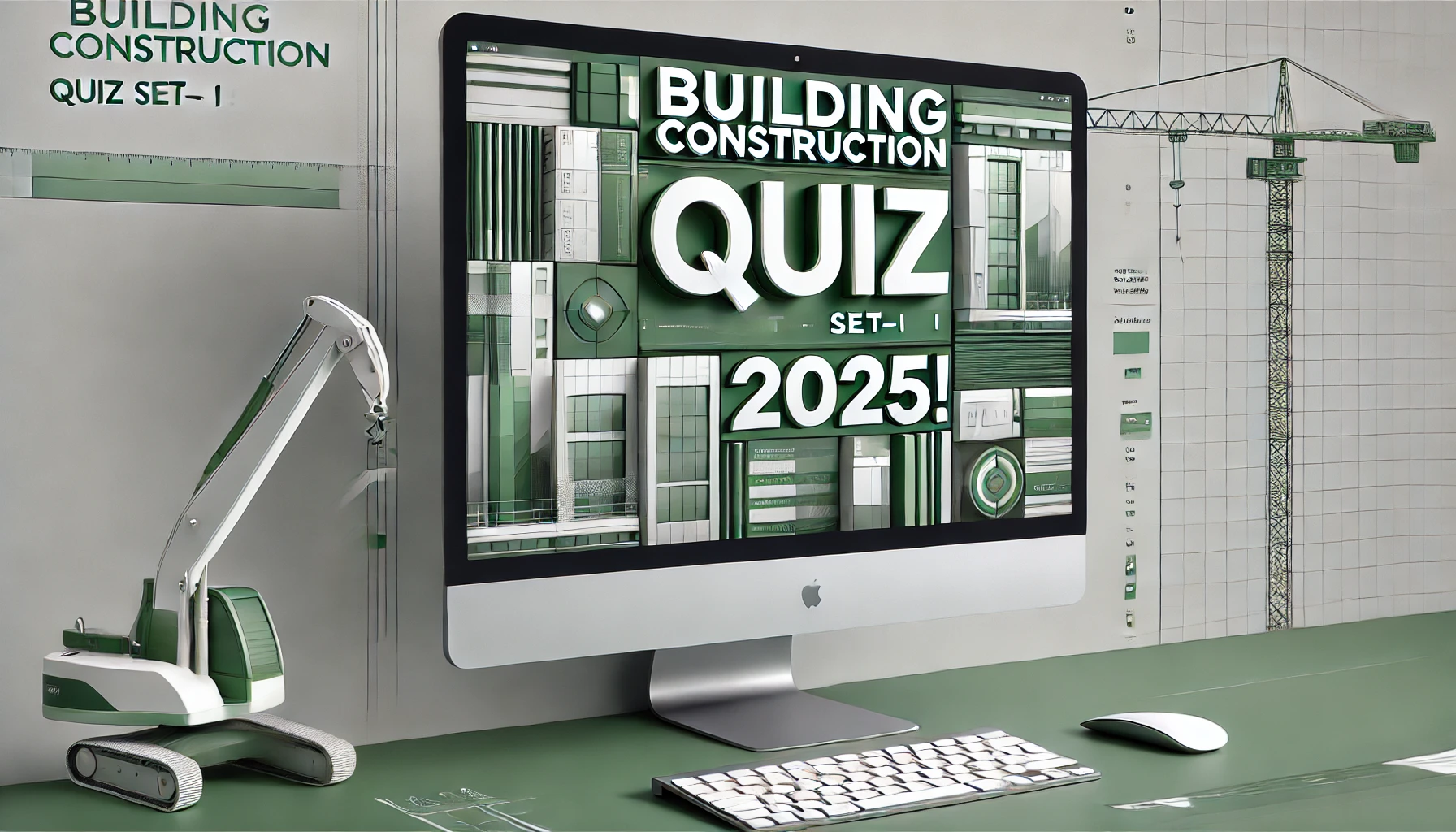Geotechnical Engineering Quiz Set-1 [2025]
Geotechnical Engineering Quiz Set-1 [2025] In this blog, we’ve curated 50+ thought-provoking multiple-choice questions covering the fundamental and advanced concepts of geotechnical engineering. “Geotechnical Engineering Quiz Set-1 [2025]” is designed to help you refresh your basics, challenge your knowledge, and gain practical insights into the techniques and principles of soil mechanics and foundation engineering. Whether you’re a civil engineering student, a geotechnical professional, or preparing for competitive exams, this quiz is the perfect way to enhance your expertise in geotechnical engineering. Let’s dive into the “Geotechnical Engineering Quiz Set-1 [2025]” and start exploring! Geotechnical Engineering: A Foundation of Modern Infrastructure Geotechnical engineering is a crucial branch of civil engineering that deals with the behavior of earth materials and their interaction with human-made structures. It plays a vital role in the design, construction, and maintenance of infrastructure such as buildings, roads, dams, tunnels, and bridges. This field focuses on understanding soil and rock mechanics to ensure stability, safety, and sustainability in construction projects. What is Geotechnical Engineering? Geotechnical engineering involves analyzing the physical, mechanical, and chemical properties of soil and rock. Engineers use this knowledge to determine the suitability of a site for construction and to design foundations, retaining walls, and other earth-support structures. By studying the interactions between natural geological formations and human activities, geotechnical engineers help prevent structural failures and mitigate environmental impacts. See Also: Engineering Mechanics Quiz Set-1 Key Applications of Geotechnical Engineering Foundation Design: Ensuring that structures have a stable and durable base to bear loads safely. Slope Stability Analysis: Assessing and preventing landslides in hilly or mountainous regions. Tunnel Construction: Designing safe underground passages by understanding rock behavior. Dams and Embankments: Ensuring water-retaining structures are stable and impermeable. Ground Improvement: Enhancing weak soils through techniques like compaction, grouting, and soil stabilization. Earthquake Engineering: Designing structures that can withstand seismic activity by studying soil liquefaction and dynamic response. Challenges in Geotechnical Engineering Geotechnical engineers face various challenges, including: Uncertainty in Soil Properties: Unlike manufactured materials like steel or concrete, soil properties can vary significantly within short distances. Environmental Impacts: Balancing construction needs with environmental sustainability. Climate Change: Addressing the effects of rising sea levels, increased rainfall, and other climate-related factors on soil stability. See Also: Concrete Structures Quiz Set-1 Tools and Techniques in Geotechnical Engineering Modern geotechnical engineering relies on advanced tools and techniques, including: Site Investigations: Using methods like borehole drilling, cone penetration tests (CPT), and geophysical surveys. Laboratory Testing: Analyzing soil samples to determine properties like permeability, shear strength, and compressibility. Numerical Modeling: Employing software to simulate complex geotechnical scenarios and predict outcomes. Importance of Geotechnical Engineering in Sustainable Development Geotechnical engineering is pivotal in creating infrastructure that minimizes environmental impact and ensures long-term stability. By understanding and respecting the natural characteristics of the earth, engineers can design projects that harmonize with the environment. Sustainable practices, such as reusing excavated soil and implementing eco-friendly construction techniques, are increasingly integral to geotechnical engineering. See Also: Steel Structures Quiz Set-1 Conclusion Geotechnical engineering is the backbone of modern infrastructure, providing the knowledge and expertise to build safely and sustainably on our planet’s diverse and often unpredictable terrain. As urbanization and climate change continue to shape our world, the role of geotechnical engineers will only become more critical in ensuring a stable and resilient future. FAQ: Geotechnical Engineering 1. What is geotechnical engineering? Geotechnical engineering is a branch of civil engineering that focuses on the study of soil and rock behavior to support construction projects and infrastructure development. 2. Why is geotechnical engineering important? It ensures the safety and stability of structures by analyzing ground conditions and designing appropriate foundations and earth-support systems. 3. What are the key applications of geotechnical engineering? Applications include foundation design, slope stability analysis, tunnel construction, dam and embankment design, ground improvement, and earthquake engineering. 4. What tools are used in geotechnical engineering? Common tools and techniques include site investigations, laboratory testing, geophysical surveys, and numerical modeling software. 5. How does geotechnical engineering contribute to sustainability? By designing projects that minimize environmental impact and implementing eco-friendly construction techniques, geotechnical engineering supports sustainable development.









